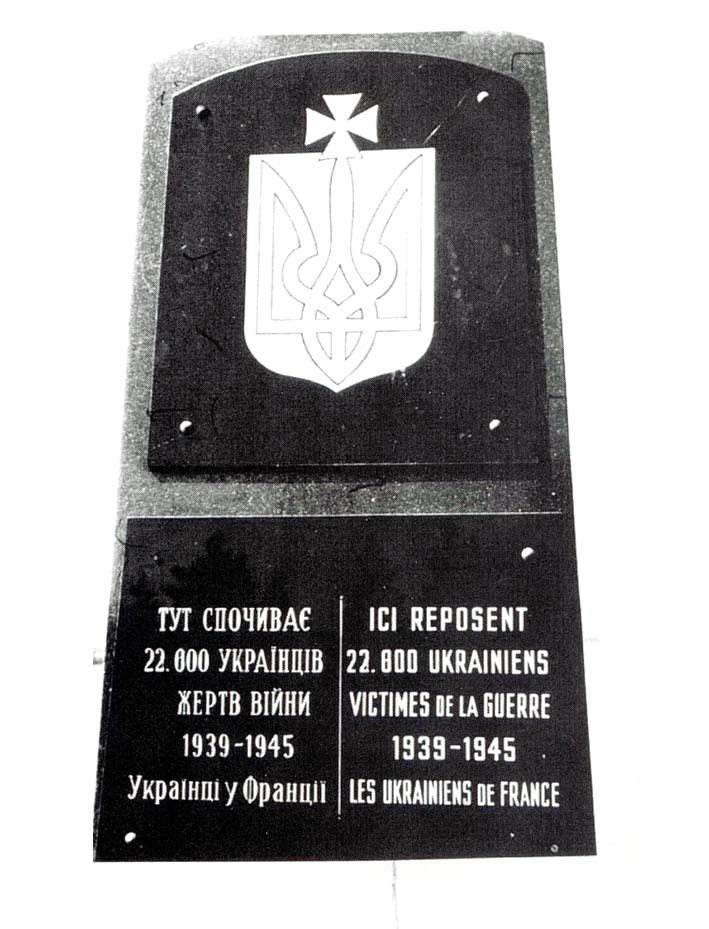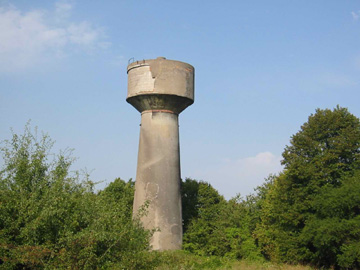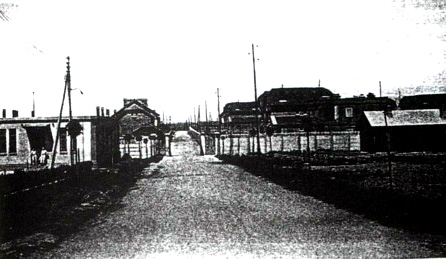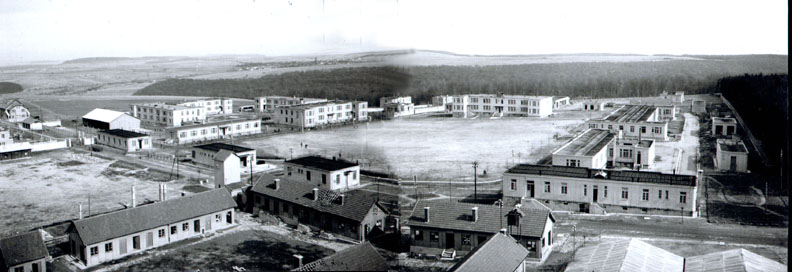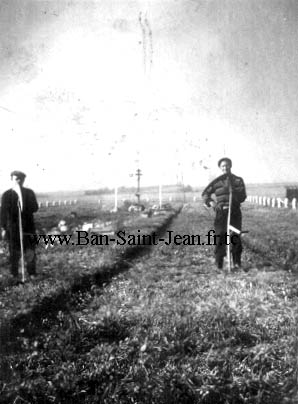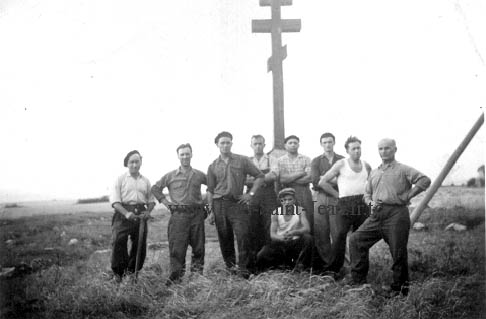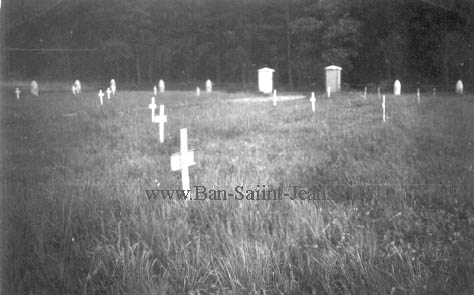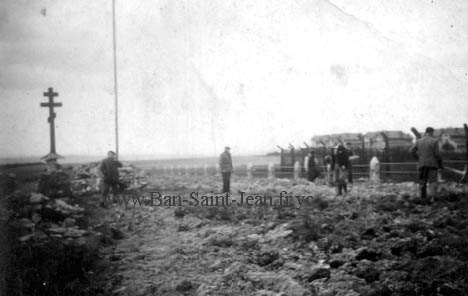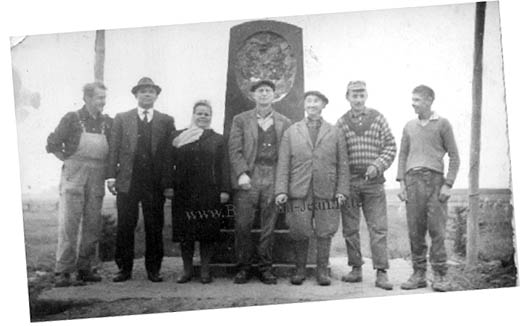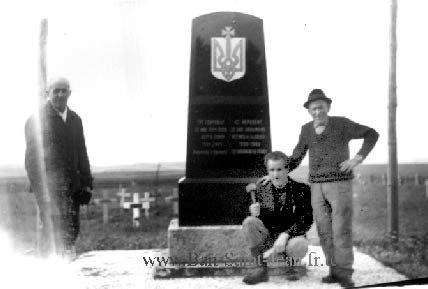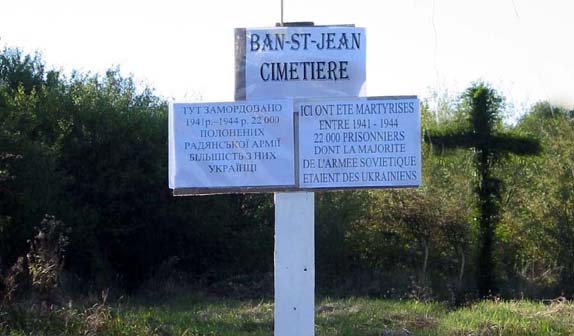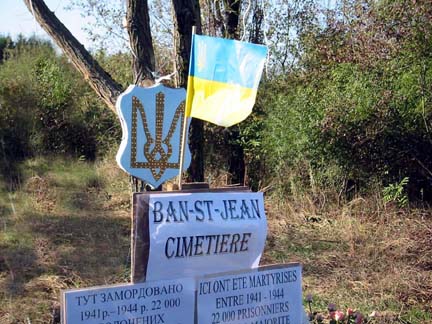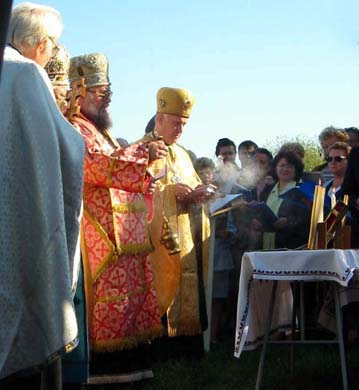Metz POW Concentration Camp, France The camp Ban Saint Jean (Johannis Bannberg in German), is
located about 6 kilometeres east of the city Boulay-Moselle, near the town
Denting, Lorraine, France. Boulay-Moselle is about 20 kilometres east of
Metz. The town Denting was the reason for calling Ban Saint Jean, camp militaire
de Denting. The US Army called it after liberation in 1944, Johannis Bannberg
Hospital, Denting, France. Also near the camp Ban Saint Jean is the town
of Niedervisse, also Departement Moselle. The towns, Denting and Niedervisse,
can be found on a regular map of Lorraine, France. The camp is located between
these 2 towns on a hill.
City Map
http://www.pinetreeline.org
Order
a Map http://france.map-vista.com
Archives
Municipales of Metz has no files on Camp Ban Saint Jean. They write:
Dear Sir,
I
write to you concerning the site http://www.dpcamps.org/metz.html
where I see appearing your name at the foot of the page.
A Canadian researcher contacted us giving this site in reference.
In which case, it is advisable to remove the Municipal Archives of
Metz as references. We do not have any document on the camp Ban St
Jean which is not in the territory of the Town of Metz. We preserve
only the files of the administration of the town of Metz. It is
absolutely necessary to correct your web page by not giving
our address, we don't have anything on this camp and one should not
give us as reference. With my sincere greetings, Jocelyne BARTHEL
Conservator of Archives
Hallo,
Thanks a lot for your quick response and the reference to "The Grand Alliance
and Ukrainian Refugees." A historian I work with, already contacted the
archives of Metz, but without any result.
I'll give you now some further information. In appandage there are some photos of Ban St. Jean (Johannis-Bannberg in the German times). Ban St. Jean is near the small city Boulay sur Moselle, about 6 Miles east of Metz. During World War II, it was a German POW-camp for Soviet soldiers, liberated by American troops on November 25,1944. One year later a French-Soviet delegation visited the camp and found common graves with about 22,000 victims. They declared this as a German war crime, but Germany was never accused for it. From the Ukrainian community of east France (President Mr. Anatole Silbernagel) the victims are declared as Ukrainians and there existed a memorial, which disapeared in 1980 after a Soviet visit. (See photo.)
The plaque reads:
Here
rests 22,000 Ukrainian vicitms of the war 1939-1945 Ukrainians in
France
Is it possible that members of the 1. Division of Ukrainian National Army (before 14. Waffen- Grenadier- Division of SS) had been in this camp? We know, that about 7,000 of the 22,000 had been in DP camp Rimini under British control. Do you know anything about the rest of division, which had been under American control? We would like to know, who the 22,000 victims are and why the world's history doesn't remembers them.
Thank you for your interest and help
Roland Zimmer / Germany
Dr. Irmgard Wilhelm-Schaffer / Germany
Kaserne Frankr - Ban Saint-Jean (Johannis Bannberg)
10/2/05
These photos were submitted by Romain Bryjowski, who has many documents. Please
correspond with him directly at bryjowski.romain@cegetel.net.
In the
articles below, The New York Times erroneously records that these were Russians
when in fact they were Ukrainians. The placard is definitely Ukrainian. Ukrainians
weren't allowed to have their own identity.
http://www.moosburg.org
http://www.moosburg.org
http://www.moosburg.org
Computer translation by Babelfish:
Katchka #6, December 2001
Forgotten of the Round of Applause-Saint-Jean
A commemorative plate pays homage since last 25 November to the thousands of Ukrainian prisoners of war, missing from 1942 to 1944 in the camp Nazi of the Round of Applause-St-Jean in Lorraine. After some 60 years of lapse of memory, the truth on the tragic destiny of these damnés of the history finally reappears. Return on a page of World War II too quickly buried.
Inschrift Boulay - Here
3,600 Ukrainians rest
Victims of war 1939-45
Ukrainians in France.
Recalls to the memory a black marble plate, in the shade of two bulky fir trees bathed in an autumnal fog. In Slavic at the bottom of requiem, an incense net is spread in spite of the drizzle and adds a little more melancholy to the table, before the Ukrainian anthem does not tear the air of the peaceful surrounding countryside and this dark quietude. If the scene resembles to mistake there with a section of life of Ukraine and with the traditional commemorations of its martyrs, it however occurs to France, in a small cemetery of Lorraine. Although the plate which has been just inaugurated and blessed on 25 November 2001 in Boulay (close to Metz) pays homage to these disappeared Ukrainian, it does not let predict the infamous tragedy which was done day in the old camp Nazi close to the Round of applause-St-Jean. From 1942, did this old military camp of the Maginot line (1) see whole coaches pouring a flood of Soviet prisoners ? in the near station, following the Operation Barbarossa launched by Hitler on the face in June 1941. Actually, spoils of war Nazi made up essentially of enr冤és Ukrainians good liking badly liking in the Red Army. Consequently, the quartering reconverted by the Nazis in prison camp of French war since the beginning of the war, becomes a stalag with the Slavic accents. But in spite of daily work in the close farmers, little from prisoners will escape from the inhuman conditions from the labour forced in the coal mines and iron from the area. The vicious circle Nazi is completed when with end of force, they regain the camp of the Round of applause-St-Jean to die there, driven back with the famine. Mrs. Steinmetz, septaire of the common neighbor of St-Avold, was 18 years old when she comes across the prisoners tearing off barbed wire of the Maginot line. "Brot, did Brot..." (German bread) they beg to whomever passed on his bicycle, impotent vis-a-vis with inexorable Nazis prohibitions.
On the whole, more than 20,000 prisoners will find death, although the exact number remains difficult to determine.(2) An edifying figure which would make of "Ban-St-Jean" the largest mass grave of victims of the Nazism in France during the war, although internment Nazis and concentration camps essaiment under the mode of Vichy. However, if "Struthof", "Schirmeck-Natzweiller" (3), or "Drancy" defray the chronicle and feed research after the defeat Nazi "Ban-St-Jean" have passed almost unperceived for 60 years. A page of the paradoxically ignored history which would have to deserve a very detailed attention beyond disasters quantitative competitions. Only the body of press of the French Communist Party, Humanity, is indignant truly at this carnage on November 1, 1945, by instrumentalisant it with the service of a sacrifice?communist?.
Well quickly eclipsed, the tragedy does not escape however from the Ukrainian community from the East from France, which, conscious of the origin of the martyrs fills his duty of memory since 1947. Two decorated bilingual steles commemorative of a tryzub (national three-pronged fork-symbol of the Ukraine) are born then at one year of interval at their initiative on the burials of the Ukrainian prisoners. Set up in the Jewish cemetery of Boulay, the first commemorates the "3,600 Ukrainians" conveyed in the common graves, after a last breath in the near camp, then moved in in additional hospital of the camp of the Round of Applause-St-Jean.
Does the second draw up on the mass grave even of the Round of applause-St-Jean in memory of the"22 000 Ukrainians" there supposed to rest. But beyond the dubious figures, these...See original French text: http://www.ji-magazine.lviv.ua/
Olga's reply:
Anyone
who has more information on this subject, please contact us and we'll update
this site. There is quite a bit of confusion about Soviet and Ukrainian. Both
the USSR and Nazi Germany swept through Ukraine and forcibly took men from
Ukraine to the front. That is why the stastics refer to Soviet soldiers where
they lost their Ukrainian identity and were referred to as Soviets when in
fact they were Ukrainians.
Little known ethnic cleaning of the Ukrainians: The Tartars and Mongols tried to erase Ukraine. The Soviets tried to erase Ukrainians, The Nazis tried to erase Ukrainians. The Polish tried to erase Ukrainians. And in America, they have erased Ukrainians out of the history books. They won't recognize the 1932-33 famine. They don't even acknowledge Ukraine was at World War II. There are even people today trying to erase the Memorial placed for Ukrainian freedom in Washington DC.
Hallo
Olga,
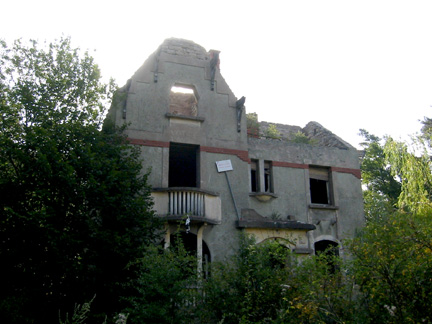 We
don`t know whether Ban St.Jean was an DP Camp. We only think its
possible (we think such big buildings were surely used after war, when
a lot of prisoners had to sleep outside) and asked you about further
informations; so please put at least a "?" in your headline. It was surely
an German camp for Soviet [or Ukrainian] soldiers until November 1944.
We
don`t know whether Ban St.Jean was an DP Camp. We only think its
possible (we think such big buildings were surely used after war, when
a lot of prisoners had to sleep outside) and asked you about further
informations; so please put at least a "?" in your headline. It was surely
an German camp for Soviet [or Ukrainian] soldiers until November 1944.
The picture we sent to you is a photo of Ban St. Jean /Johannis Bannberg in 1941, when the German soldiers lived.
Today I send you pictures of a typical house of the officers and of the graveyard of Boulay, which is mentioned in the Kachka article:
Does anybody knows, what this symbol (the Ukrainian trizub with a cross on it) means?
Dr. Irmgard Wilhelm-Schaffer
Reply to question:
Hello Olga, Organizations affiliated with the Ukrainian Greek Catholic
Church generally added a cross to the tryzub. Laurence Krupnak
Here are some photos of the Ukrainian commemoration on September 21, 2003 sent by Irmgard:
Le Camp du Ban-Saint-Jean. (1941-1944). ... Hommage aux prisonniers de guerre sovietiques,disparus de 1942 a 1944 dans le camp du Ban-Saint-Jean en Moselle.
Have this page translated in Yahoo:
http://membres.lycos.fr
Hallo
Olga,
Please contact the Bundesarchiv (federal archive), Aussenstelle Ludwigsburg in
Germany, for further informations. In 1968 the Bundesarchiv had was ordered to
visit the camp Ban Saint Jean to investigate German war crimes in this camp.
Specialy they looked for the killing of 20-30,000 Soviet [Ukrainian] soldiers
in this camp by German army, SD (security service of the SS ) or Gestapo. Please
ask for the result of this investigation.
Aussenstelle Ludwigsburg
Postfach 1144
71611 Ludwigsburg:
Also
please look at the web-site:
Ethnic
Cleansing and Soviet Crimes Against Humanity by Altaullah Bogdan Kopanski.page
5
"Stalin
told the Polish premier Stanislaw Mikolajczyk, that he had liquidated
20,000 Ukrainian nationalists and
...)"
Book: Stanislaw Mikolajczk, The Pattern of Soviet Domination, London
1948, p.111.
I have seen new information about the liberation of Johannis Bannberg Hospital, Denting, France in November 1944. This is POW-camp Ban Saint Jean near Boulay, France. I found it on the internet site of the:
Center
of Military History http://www.army.mil
United States Army
Waschington, D.C., 1992
United States Army in World War II
Special Studies: Civil Affairs: Soldiers become Governors
Chapter XXX, Refugees and Displaced Person in the Wake of Battle, Page
854
Whoever is interested in to the history of Johannis Bannberg / Ban Saint Jean, Denting, France should took a look at it.
For the history of the camp Ban-Saint-Jean / Johannis Bannberg, please look at the website: http://www.moosburg.org
For more informations, please contact the embassy of Ukraine in Germany: http://www.botschaft-ukraine.de
or
e-mail: konsular@ukrainische-botschaft.de
http://www.hestroff.com
Roland Zimmer / Germany
